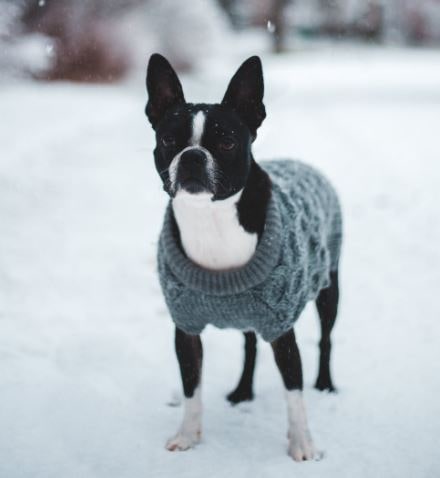Imagine This…
An adorable blond cocker spaniel
That's fairly easy.
But not just any cocker paniel
An adorable blond cocker spaniel that loved going to the veterinarian…
Now that's a little harder to imagine.
I just happened to know this cocker spaniel who's name was Smiley. He is no longer with us, but because of his overwhelming love for coming to my vet clinic I have not forgotten him.
It was always hard not to stop and stare when he came in for an appointment.
Once inside his owner would let go of his leash. He would proceed to the reception desk and bounce on the gate leading to the back. Once successfully behind the gate he would find an open cage and get in or he would wait until one of the staff would open the cage door for him. He really seemed to enjoy this, and he did it every time he came to the clinic which was often because he was groomed regularly.
Smiley had associated going to the veterinarian as a positive experience.
Most pet parents will agree, this is not typical for pets visiting their vet office.
Maintaining regular veterinary appointments are important to our pet’s overall health and well-being. While many pets handle these visits just fine, others struggle to enjoy them. Some pets learn to associate their time spent in the veterinary clinic with feelings of pain, discomfort, and unease.
Is it possible to make vet visits more enjoyable for your pet?
Yes, it is. Here are a few things that you can do to make visiting the vet more enjoyable for you and your pet.:
#1. Choose the right vet clinic.
Overstimulation can become a problem when a pet enters the veterinary clinic. In order to reduce the stress level of a pet brought about by new sights, sounds, lights, and scents, chose a vet clinic that includes these options:
· Dog and cat only examination rooms
· Cat-only appointment hours
· Minimal amount of waiting for appointment times
· Quiet environment when waiting for appointment
#2. What you can do to help:
· Hunger motivates
o As long as medically appropriate, you can withhold your pet’s food for several hours before the appointment time, please note I am only suggesting several hours before the appointment.
o Animals that are a little hungry are usually more food-motivated and may better respond to the fear-free techniques. Offer treats when your pet behaves calmly on the way to the vet office, during the exam or around the staff members.
· The Pet Carrier
o If your pet only sees the carrier when it is time for a change in their comfortable lifestyle, it will learn to associate the carrier with stress
o You can remove this negative reaction by using the carrier in ways that enable your pet to associate it with comfort
o For example, you can use the carrier as a special place to:
· Feed treats
· Play with toys, keepa toy they just for when they are in their carrier
· Offer a comfortable spot to rest
· Provide a relaxing and calming atmosphere by spraying with soothing pheromones
· Create an environment of Calm
o If your pet likes an item that soothes them, bring it along to the appointment
o For example, if your pet responds appropriately to the use of a Thundershirt at home, there is a good chance that it will be helpful to the pet during the vet visit
o If your pet has a prescription that helps to calm and comfort it, bring this medication to the appointment and ask your veterinarian how this medication can help during office visits. Please see #3. For more information about this topic.
o Keep your pet in their carrier while in the waiting room. Sometimes our first instinct is to take them out and offer comfort while holding them. But for your pet this may make the environment more intimidating if the waiting room is full of other pets and unfamiliar noises and smells.
· Familiarity breeds Reassurance
o Pets that have learned to associate the vet clinic with negative feelings can be helped by being brought to the clinic between appointments for a pet and a treat. Many clinics offer free treats to their patients. Stop by with your pet and pick one up just for the fun of it.
Incorporating techniques that lower the amount of stress on an animal during an examination or medical procedure often will reduce the amount of restraint needed.
· Exercise or Play with your Pet before the appointment
o If your pet has been sleeping or resting in a quiet environment all day and their first stimulation is a car ride and exposure to many new sites and sounds at the vet office, they may go into super stimulation mode.
o Take them for a walk or play with your pet to ease them into changing the pace of their day. This has the added benefit of your pet maybe being a little tired and ready for some rest during the trip and at the vet’s office.
#3. Talk to your Veterinarian and don’t be afraid to use anti anxiety and calming products
If a pet remains unable to relax using the above techniques, products to reduce the stress can be determined for use by your veterinarian. Some of the items can be given before the appointment, some at the start of the appointment. For example:
· Anxiety medications, Clomicalm, Acepromazine, Fluoxetine or Trazadone
· Natural products, Stress Away, Adaptil Spray (dog) or Feliway Spray(cat), or Zylkene,
Veterinarians and their staff are here to help make each office visit a positive one for you and your pet. If your pet is a handful going for his annual check up, talk to your veterinarian in advance about ways that they can help you and your pet have the best possible experience.
To your Pet’s good health,
Dr. Barry
Information gathered from:
http://veterinarynews.dvm360.com/5-ways-get-started-with-fear-free-veterinary-practice?rel=canonical







